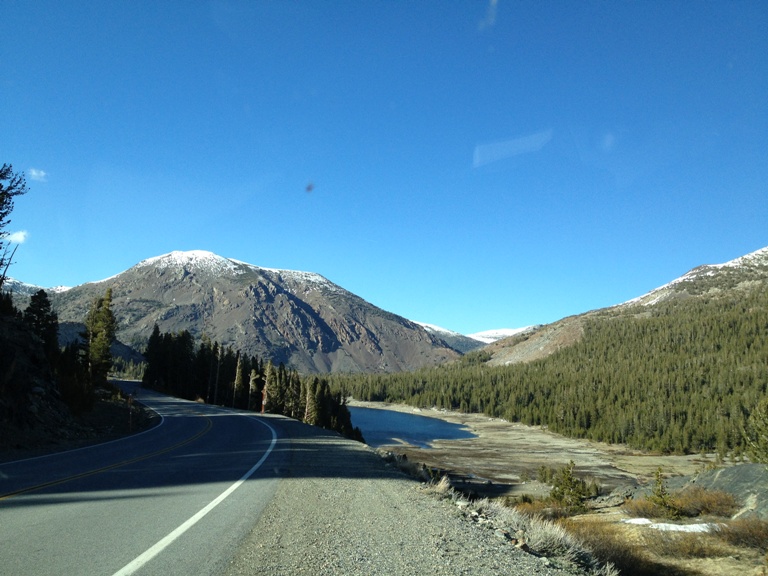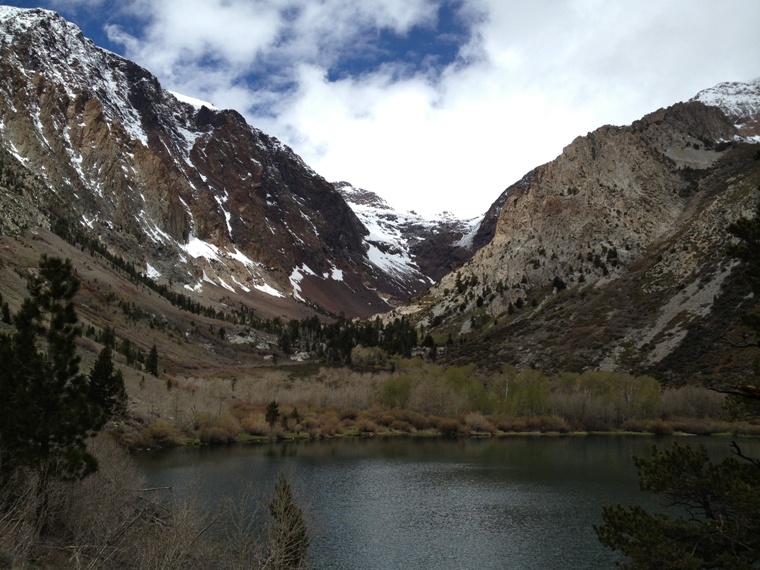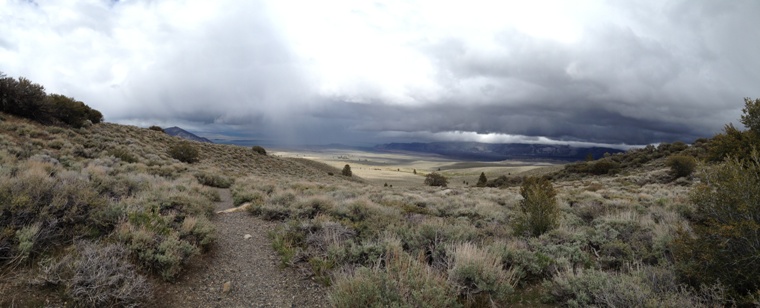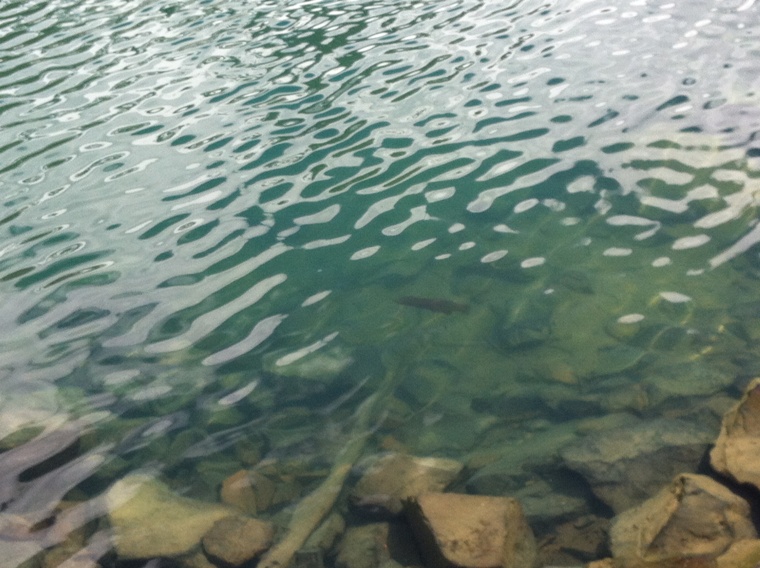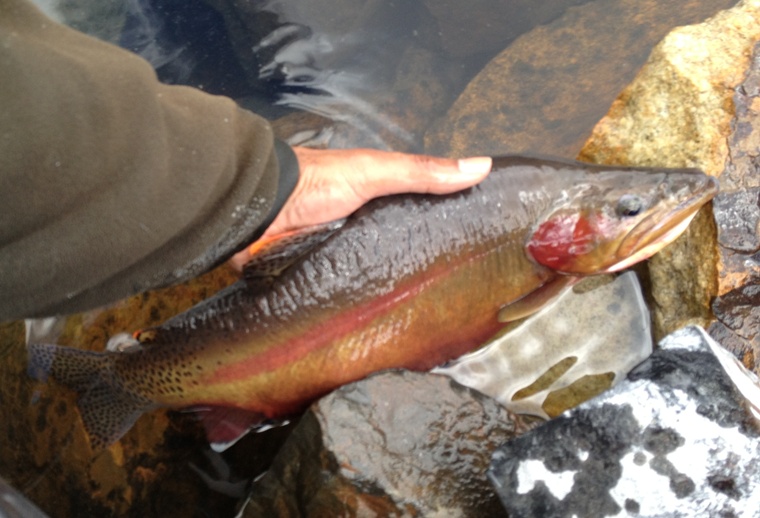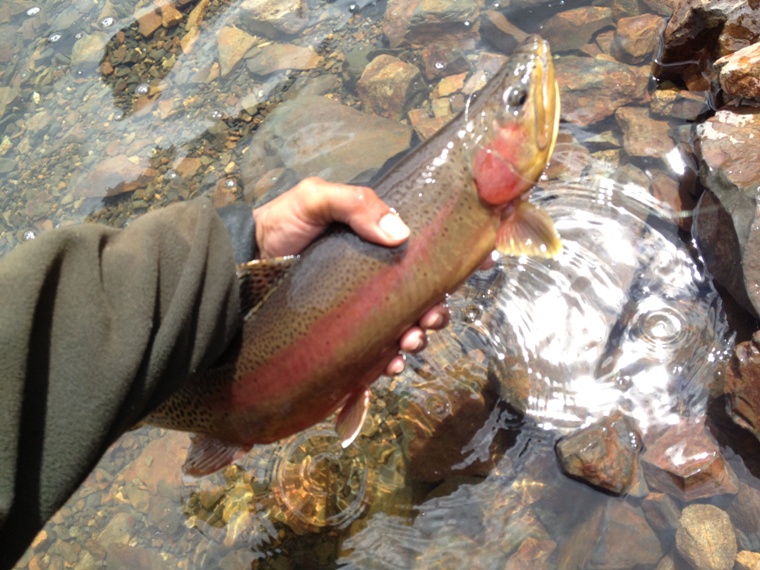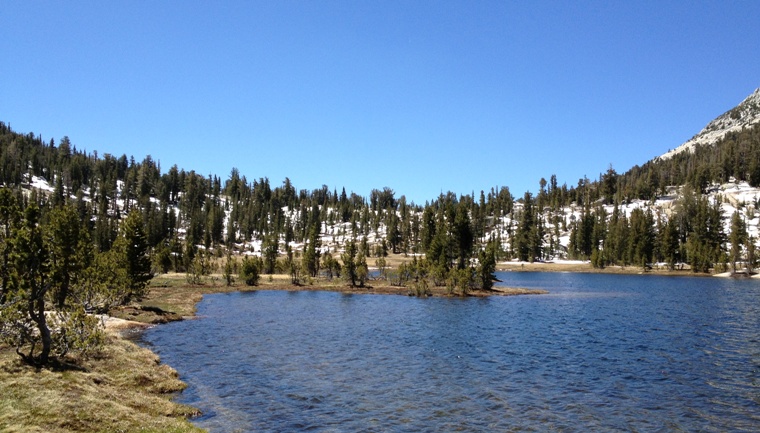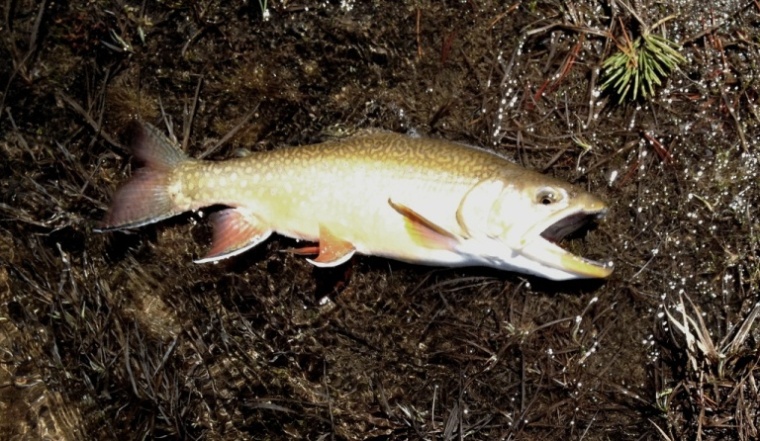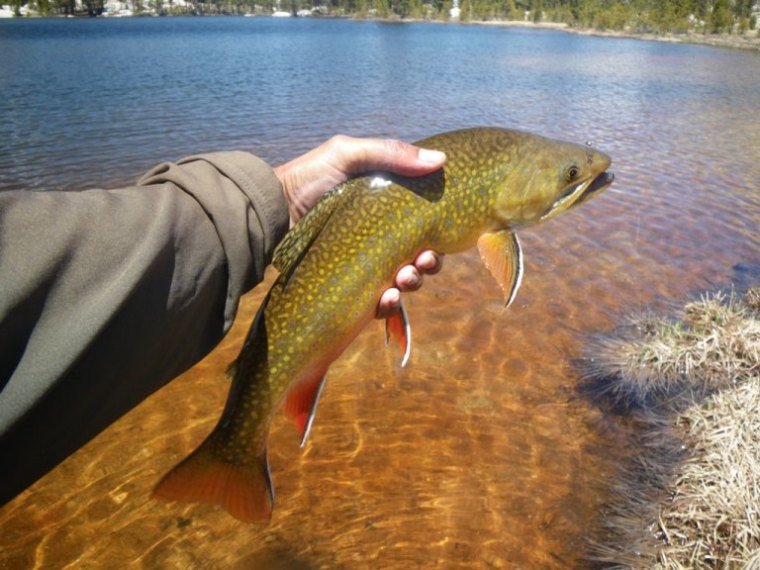|
|
|
|
|
May 23rd, May 24th, May 27th 2015, - Bernard's Lake, None Shall Pass Lake, Yosemite Char
Time:
Generally Late Mornings / Early Afternoons NB: I'm not outing any lakes in this Chronicle. The lakes written about herein are rather well known by now but because they were either originally relayed to me by friends who (15 years ago) asked me to keep them under wraps or I've finally visited them based on urgings of friends. I'm respecting their wishes. Narrative: Another Mammoth Lakes trip has come and gone. Historically I post these Chronicles in the JMW section but I don't think I actually fished inside the JMW this year. This year's trip was shorter than most and we didn't make the requisite trip up to the Little Lakes Valley, nor did I actually fish Hot Creek, despite spending 3 nights in a cabin there. I had hoped to get back into the Anonymous Lake, though that didn't happen because of the weird weather we'd had the week prior and the week of the trip. Last minute snow crushed any hope of day hikes over anything much higher than 10,000 feet. The weather was so dicey on the way up that when we came to the junction of highways 108 and 120, we were given mixed signals. The highway signs and websites said that both Tioga and Sonora Passes were open but Yosemite National Park radio was reporting that Tioga Pass was closed. It was raining so we opted to take Sonora Pass; it generally stays open when Tioga is shuts down. If one of the passes was to close during our approach, it would be less likely on Sonora. Sure enough, about a mile before the pass, just short of it's 9,623 feet apex, the rain turned to snow. Caltrans vehicles were on scene ready to go into action. Just short of 9,600 feet is about where we'd find the snow levels during this trip. Mostly in the colder, shaded areas of trails and along ridges and granite. It was scattered up to about 10,000 feet but the patches of snow were often large, deep and soft. If I'm not mistaken, Roger fell up to his mid thigh in one section on our way up to None Shall Pass Lake.
Tioga Lake May 2015 (lower than I saw it in the Fall of 2014) I hate switching flies time after time, over and over, hoping to stumble onto the one fly pattern that the fish will take confidently. In general, I think it's just poor fly fishing. Either I'm too lazy to provide the fish with the correct presentation or I don't want to bother trying to figure out what the fish are actively feeding on but that's exactly what I did on Bernard's Lake on Saturday and None Shall Pass Lake on Sunday. As someone that usually only fishes 6 or 8 patterns in a year, I believe that presentation is more important than fly, especially on high country lakes. Sure, there are times on high country lakes when the right fly can make or break a day but, more often than not, the key to catching fish consistently is finding the correct pattern of behavior (either yours or theirs). That's exactly what I found. Bernard's Lake Saturday, Roger and I were a bit late getting out of the cabin. We hemmed and hawed a bit about where to go and finally decided on Bernard's Lake. It was about the right drive/hike combination to get us on the water fast enough to allow several hours of fishing before the forecasted afternoon thunderstorms. It was also high enough to give us some insight into this years high country conditions and frankly, not a difficult enough hike to tire us out before our big hike to None Shall Pass Lake on Sunday. Bernard's Lake is a well known brown and brook trout lake that get's plenty of fishing and non- fishing visitors. A relatively moderate hike, it's in a beautiful canyon which is a favorite visiting spot for families and other small groups of day hikers. It's a good early season choice, especially if you're getting a late start on the day.
I'd fished the lake several years earlier with Roger and then, just as now, we left the lake prematurely and without fishing but a very small portion. I don't recall why we left early the first time but this time around, a thunderstorm that appeared to be brewing over the next ridge chased us out. Roger and I fished the same small area that we did last time and Roger managed to land two fish but I'd go fishless due to a poorly tied knot. We'd been on the water for nearly an hour and half before I managed to hook that one and only fish. I started fishing like I usually do, by scanning the water for active fish. With the exception of the few rises out of casting range, the fish didn't seem to be actively taking dry flies and the water was stained enough to make it difficult to sight all but the closest fish cruising near shore. I tied on a soft hackle hares ear partly because it's what I always fish subsurface first and partly because I was sure it was what I caught fish on the last time we were where. As a companion, I tied on a Stillwater Nymph because.... well, why not. It's a good fishing fly which can be mistaken for a scud or damsel nymph. I started my normal fan pattern of casting, starting with a count of 15 before the retrieve, then 20, then 25, then 30. I was fishing over a drop off but instead of going deeper, which I knew I needed to do, I decided I needed to change flies. Why, well casting out a fly and letting it drop to a count of 45 or 60 seconds requires a bit more patience and commitment than I had this particular day. So, I started swapping flies. This made me feel like I was doing something on the one hand but one the other hand it wasn't at all fulfilling. I knew what needed to be done but was refusing to do it. Finally, after an hour of changing flies, fishing slightly different water (by slightly I mean I moved no farther than 15 feet from my original position.) I tied the Hare's Ear and Stillwater Nymph back on and finally did what I needed to do. I fished deep. Almost immediately I was rewarded with a tug on the end of my line which I played for a short while before the line went slack. When I retrieved the terminal end of my line I found the dropper had slipped off either because of a bad knot or loose connection. (Roger also confirmed he picked up his fish deep.) Encouraged, I decided to adopt my normal pattern of sticking and moving more. Present the flies at the desired depths, try different retrieves at those depths and move on. Unfortunately, the first clap of thunder reverberated across the lake before I could successfully employ this approach. On the way out, I played with a small brook trout in the creek which I also failed to land when my dropper got caught up on some brush and released tension on the fish. An incident that I've now learned to use to my advantage.
None Shall Pass Lake On Sunday, Roger and I got an early start on our trek to None Shall Pass Lake. It was a moderately tough hike which required an hour or so of bushwhacking just short of the lake. I'm convinced that Roger had decided, in one fell swoop, to get back at me for all the sketchy hiking I've put him through. Over the years we've been in some tiring and moderately dangerous situations but for down right discomfort, this hike takes the cake. An hour, through tight brush, to travel a mere 1 mile. It had to be done at the time but next time, I'm going to find a longer, less brushy route....maybe bring some repelling rope.... or an ice axe and crampons this early in the season.... maybe base jump in..... anything's better than that brush.... The fishing though was worth it. Roger had been fishing this particular lake hard over the last year or two. Making several extended backpacking trips here and late last fall had it dialed in. Catching several ridiculously large golden trout. Larger than any golden that I've ever caught and probably larger than any trout I've ever caught. We'd had several discussions about the lake and fly pattern seemed to be pretty important. The fish weren't terribly spooky and weren't put down easily but seemed to be pretty selective about fly pattern. If you've caught 4 golden trout in a day of fishing here, you've done well. Especially since those golden trout are likely to be 14 inches plus. My guess is that last year Roger had spent close to 10 days fishing the lake and in that time, he'd found the fly patterns that worked for him. I made this point before we started fishing. He'd brought a bunch of flies that I didn't have but we'd both start off fishing a Stillwater Nymph. I made the point that, the fact that we were both fishing Stillwater Nymphs probably didn't really matter because we both fish different methods. Roger fishes with an intermediate line in the style of Denny Rickards and I fish a floating line. There have been plenty of times in the past, especially when fishing for Golden's where his method has out fished mine, despite having fished the same water, with the same fly. In these instances, I've had to modify my presentation, location and at times fly, to get the same results. It was a similar situation here. I wasn't catching fish until I slowed down and considered what the fish appeared to be doing and modified my presentation. Once I did, the takes from the fish were consistent and repeatable.
Roger gave me first crack at the fish when we arrived at the lake. We stashed our gear behind a tree and from there I could see about 4 fish directly in front of us. A few more cruised into our little area while we were stringing our rods, but they were small (12 to 14 inches) compared to what I'd seen previously. I waited for the larger fish to swim back into casting range and shot out several casts with a soft hackle hare's ear and Stillwater Nymph. I was confident. I generally feel that if I can see a fish I can catch it and the Stillwater Nymph was one of the flies that Roger caught fish with in the past. In addition, I wasn't just casting to a lone cruising fish but several cruising fish in the 13 to 16 inches, maybe more, range. The laws of probability appeared to be on my side. My casts didn't seem to be putting the fish down, they simply weren't interested. So it became a numbers game, a numbers game I was determined to win:
Unfortunately, I didn't have the numbers as I don't carry that many flies. I quickly ran out of options and decided to move elsewhere. A difficult choice, given that I had I was casting to between 4 and 8 large golden trout, in plain view. I did manage to land one nice golden but it was foul hooked on the dropper when I missed the take to the point fly. I wasn't sure what triggered that fish to strike and couldn't repeat it. I was happy to land a fish though, regardless of the circumstances. If I was in a survival situation, that fish would have been food, despite how it was caught. Moving was the best thing I could have done. Not only did it instill hope of finding actively feeding fish but it encouraged me to think a little while I sat perched above the lake observing the fish. The fish were behaving oddly. For the most part, those that weren't cruising, sat mid water column "watching the shoreline". I've seen fish exhibit this behavior when waiting for terrestrials to fall from overhanging branches and have also witnessed similar behavior with fish waiting for blow in; but, the wind was in our face, not at our backs and though there was some brush, there wasn't much that was overhanging the lake. At least not where some of the fish were stationed. This wasn't the only thing. The fish themselves looked odd. Then it dawned on me. I quickly rummaged around my box searching for one of my favorite fall river patterns. I waited until I saw a school of 3 or 4 goldens and then presented the fly. The fly dropped in front of them and to my amazement, not one but two of the fish tried to take the fly- knocking heads as they fought to be the first to suck in my home made concoction of feather and fur. I landed a nice fish, so thick in the "shoulders" that I couldn't get my entire hand around it.
A fluke perhaps? I waited to for the next cruising fish to see. A fish swam by and I made another cast. Nothing. "Maybe my timing was off," I thought. I thought about how I had presented the fly the first time and made another cast when it returned. The fish, the biggest of the day, grabbed the fly but I missed. Once again foul hooking the fish. I don't often foul hook fish when I miss the set to my point fly but here it happened twice. Maybe due to the length and girth of the fish. When you're fishing a 20 inch dropper it's hard to foul hook a 12 inch fish on a missed strike. I didn't land that fish. A quick note about the rod I was fishing. I was fishing my Sage LL 9ft 5wt weight which is a medium action graphite rod known to be one of the best Sage rods made. It's a great rod, but with it a heavy fish on, I noticed that it felt dead in comparison to 8 feet 3 inches 5wt cane rod I broke last fall. I moved to another section of the lake and confirmed the pattern. I presented the fly to fish below a shallow gravel bar and another fish came to hand.
Yosemite Char On Wednesday I decided to venture into Yosemite. Let there be no doubt that among the high peaks, granite spires, giant redwoods and crafty bears there are large brook (and brown) trout to be found in the park. My last visit to this lake was un-chronicled (due to time constraints more than anything else). I simply never got around to it. Suffice it to say, I made the trip and broke my 8 feet 3 inches 5wt cane rod. I left but not before doing some exploring and managing to land two nice brook trout with just the rod tip. Intrigued by the size of the fish, during the past few months I've thought of little else but returning to see if the lake held bigger fish. This time I brought a back up rod just in case. The trek up to the lake was wet with several deep snow crossings. The days are warm enough now that the icy crust on the remaining snow in the high country gives way under a hiker's weight. Par for the course this time of year. The lake itself was free of snow except for a large patch on the far side of the lake which came in handy when I jumped the remaining 6 feet to the ground from a 15 foot cliff I was attempting to down-climb. The area around the lake was quite boggy however and I'd hate to be on the lake in two or three weeks when the mosquitoes come out in force. The water levels weren't much different than they were when I visited last Fall but the water clarity was much worse. I walked the shoreline to where I had caught fish last year, a small point with a gravel bar surrounded by deeper water. The fish appeared as silver-bronze shadows moving through the water as their scales reflected sunlight through the stained water. The wind was up and bitterly cold which made roll casting my 8ft 4wt difficult. Much of the lake though is made up of shallow plateaus that drop off into deep water. It is along these plateaus or just outside the transition point where I was able to consistently catch fish. I caught some fish in deeper water but the most consistent pattern was to search for active fish along these plateaus and cast to them.
The first fish came easy. Too easy. I caught a fish on my second cast and then my forth. Before moving on, I'd caught about a half dozen solid brook trout, all around 12 to 14 inches I think. I can't be sure. The fish I caught this week, brooks and goldens, were so solid, girth wise, that it's skewed my sense of proper fish proportions and length. I moved because all the fish I'd caught seemed to be about the same size and I wondered if I could find bigger fish. Almost immediately I questioned this decision. I'd moved just down the shore to an area where I had caught my second fish last year. It looked like perfect water but gave up nothing in terms of fish. I fished it hard but no fish. So I decided to keep moving. No endless swapping of flies this day.
I decided to keep moving and cover water a little faster. A little bit farther down the shore, on the other side of the small cove that I was fishing, I noticed a fish and also noticed that the water was a bit shallower than the water I had moved to after catching the initial six or so fish. It was more like the water at the point and when I caught two more fish, it became clear what the pattern was- concentrate on the shallow plateau along shore or more importantly, the shoreline with the longer plateaus, which didn't drop quickly into deeper water and sight fish whenever possible. I dutifully fished the deeper water but didn't linger there. In some cases, I went really deep in search of fish, counting down to 60 seconds but the consistent catching was coming from a 15 count drop in the shallower water and a steady strip retrieve. I fished the entire lake and found myself not wanting to leave. The weather was good and had I not had prior commitments, I would have fished until early evening. NB: I had a park ranger check my fishing license on the way out.
Previous John Muir Wilderness Chronicle Next John Muir Wilderness Chronicle
|

